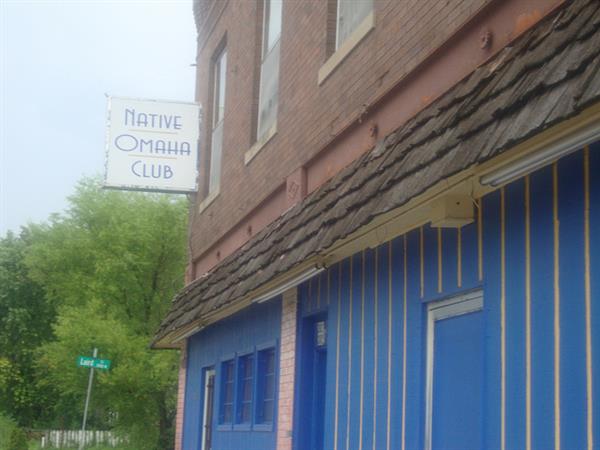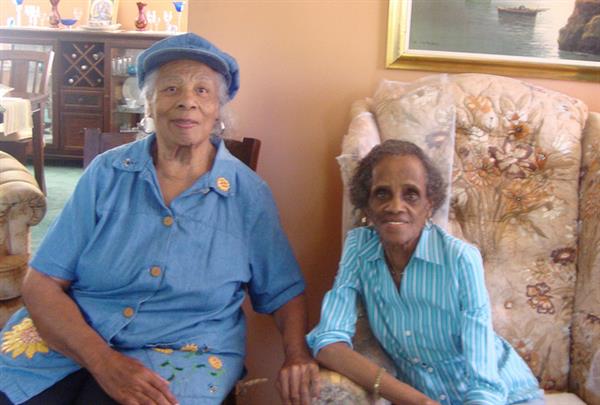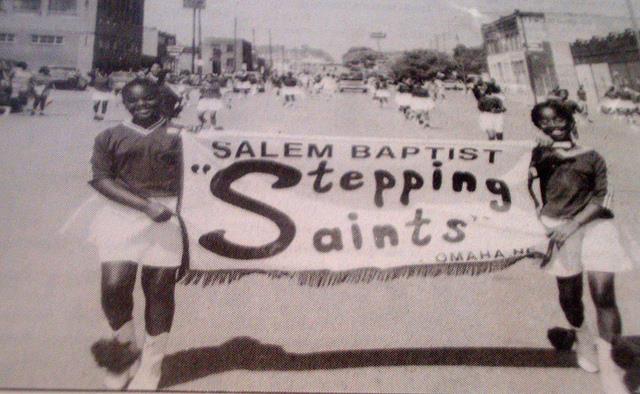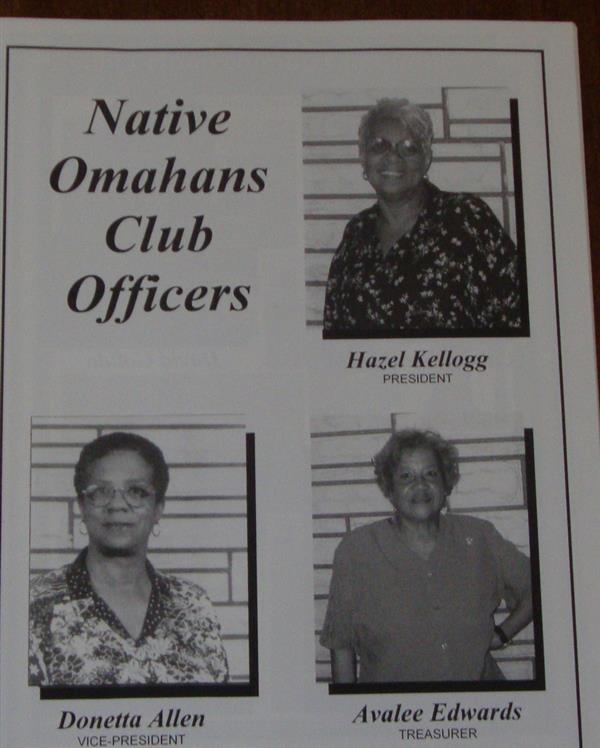Making Invisible Histories Visible
Page Navigation
- Making Invisible Histories Visible
- Lesson Plans and Resources
- iBooks on Omaha and Nebraska History for Primary Students
- Omaha Mapping Projects
-
African American Histories
- African American Artists
- African American Athletes & Facilities
- African American Churches
- African American Civil Rights Organizations - 1950s-1960s
- African American Civil Rights
- African American Contributions to Jazz, Gospel, Hip-Hop
- African American Dramatic Arts
- African American Education - Dorothy Eure & Lerlean Johnson
- African American Educators & Education
- African American Firefighters
- African American Homesteaders
- African American Law Enforcement
- African American Migration to Omaha
- African American Musicians of Omaha
- African American Newspapers
- African American Owned Businesses
- African American Politicians
- African American Social Life
- African American Workers at Omaha's Railroads & Stockyards
- African American Workers at the Naval Ammunition Depot in Hastings
- African Americans in the Civil War
- African Americans in Vietnam
- Charles B. Washington - Journalist and Civil Rights Leader
- Elizabeth Davis Pittman - Lawyer/Judge
- Green Book Omaha
- Marlin Briscoe - Professional Football Player
- Native Omaha Days
- Nebraska's Role in the Underground Railroad
- Sen. Edward Danner - Politician & Civil Rights Activist
- Sudanese Refugees
- Tuskegee Airmen
- European and Asian Immigrant Histories
-
Historic Neighborhoods & Buildings
- 24th and Binney/Wirt/Spencer Streets
- 24th and Lake Streets
- Central Park Neighborhood - 42nd and Grand Avenue
- Dahlman Neighborhood - 10th and Hickory Streets
- Hartman Addition Neighborhood - 16th and Williams Streets
- Indian Hills/Southside Terrace Neighborhood - 30th and Q Streets
- Jefferson Square Neighborhood - 16th and Chicago Streets
- Long Neighborhood - 24th and Clark Streets
- Orchard Hill Neighborhood - 40th and Hamilton Streets
- Smithfield Neighborhood - 24th and Ames Avenue
- St. Mary's Neighborhood - 30th and Q Streets
- Latino Histories
- Music Histories
-
Native American Histories
- Black Elk and John G. Niehardt
- Chief Standing Bear and Susette La Flesche Tibbles
- Dr. Susan LaFlesche Picotte - Native American Doctor
- Native American Education and Boarding Schools
- Native Americans in the Military
- Pre-statehood Interaction of Native Americans and Europeans
- Preserving Native American Tradition
- Restoring the Ponca Tribe
- The American Indian Movement in the 1960s and 1970s
- The Indian Congress at the 1898 Trans-Mississippi Exposition
- The Omaha Native American Indian Tribe
- OPS Elementary School History
- Redlining in Omaha
- Nebraska's Role in the Underground Railroad
- The 1898 Trans-Mississippi Exposition
Native Omaha Days
-
What functions do community celebrations serve in the North Omaha community?
"Never Forget Where We Come From"
-

The Native Omahans Club, where events are planned and held, is located at 3819 N. 24th St.
Native Omaha Days
-
Native Omaha Days is important to North Omaha because it brings back memories. It's where the Black community comes together, has fun, and talks to each other. Native Omaha Days is where people from across the country come to Omaha and get together to celebrate the North 24th Street culture. This biannual event has become a mainstay in the North Omaha community. The founders of Native Omaha Days were two Black women, Vera Johnson and Bettie McDonald. Native Omaha Days was founded in the mid-1970s.
Native Omaha Days is about having fun, listening to music and enjoying great food, and it's a great place to have family or class reunions. The parade route goes through North 24th Street, giving it historical significance. In 2011 the route will change to the much wider 30th Street, to accommodate the growing number of participants.
A 3:09 video produced in 2011 with interviews of Patrick Jones, Vera Johnson and Bettie McDonald.
Native Omaha Club a Nonprofit Organization
-
Native Omaha Club is a nonprofit organization that promotes social and general welfare, scholarships, and social activities for the North and South Omaha communities. On Oct. 24, 1976, the Omaha Homecoming Committee decided to reunite those who had left the city. On Dec. 13, 1976, the committee decided to call themselves The Native Omahans Club. Over the years, they have provided financial assistance to students, donated to the Omaha World-Herald Goodfellows, adopted children for the holidays, and made holiday baskets. The future for the Native Omahans Club looks bright as they continue to give back to the community.
Ms. Bettie McDonald and Ms. Vera Johnson
-

Bettie McDonald, left, and Vera Johnson created Native Omaha Days, because they were disappointed with California's Native Omaha Days. They felt as though it didn’t capture the essence of North Omaha. On the bus ride home, they devised a plan to create a homecoming event in Omaha. They both remembered how in 1977, the first year, only 15 people attended Native Omaha Days. The following biannual event drew 100. They are proud and happy to see the growth of this event and want it to continue to grow and improve each year. One of their favorite memories is the gospel fest, because they love to hear the choirs sing.
Salem Baptist Church: Stepping Saints
-

There are several step teams that participate in Native Omaha Days parade, such as the Iroquois Junior Herd, Christ Drill, and the Over Hill. One in particular is Salem's Stepping Saints, founded by Jackie Boaks and Phyllis Hicks in 1966. Salem's Stepping Saints continue to participate in this event. When the step team first started, it had between 10 to15 people. In 2011, the step team has between 30 to 40 people ranging from the ages of 12 to 20. This step team embodies the message of Native Omaha Days, which is to unite people of various ages, religious beliefs, and backgrounds. (Photo courtesy of Douglas County Historical Society).
Native Omahan Club Officers, 2011
Additional Information
-
The students’ work on this project shines a spotlight on the role of cultural celebrations in African American communities. Native Omaha Days is an event that looks back at the past and gives hope for the future, affirms the cultural and community identity of its participants, and offers celebratory fun and relief from day-to-day activities.
While Native Omaha Days is a celebration for all people who have called the city home, it is a predominantly African American celebration, based in the North Omaha community. The geographic and cultural identity of the event is important. The festival allows African Americans to reflect on their past in the North Omaha area. The students’ section on the parade route does an excellent job of highlighting this. The route starts and ends at key sites in the history of North Omaha’s African American community, passing a number of important landmarks on its way. Moreover, the festival allows many to take hope in the possibility for renewal as well as concrete action to make that future a reality. Involving youth is important to the celebration in this respect as it provides an opportunity to pass knowledge and experiences on to the next generation.
This festival also offers an opportunity for participants to identify and represent the character of their community. This representation often challenges dominant narratives of danger and decline. Instead, the festival brings together current and former residents and civic and commercial institutions to show the success of the North Omaha community. In this way, the cohesion of the community is affirmed. Family is often a recurring theme of the festival and the community is frequently envisioned as a larger family. Moreover, the students highlighted the role of Bettie McDonald and Vera Johnson in creating this event, which emphasizes the importance of women in bringing together African American families and communities and promoting cultural celebrations.
Finally, Native Omaha Days is a time for fun and celebration. People come from all over to share in fun and relaxation with friends and family members. Many attend the roughly 3-hour parade, which is a centerpiece of the festival. The students draw attention to the Salem Stepping Saints in the parade, highlighting the intersection of the sacred and the secular in community celebrations. Many Native Omahans also enjoy the social mixer, gospel night, picnic, dance, and other events.
The festival ends with “Blue Monday,” in which people say goodbye. Many make plans to return again in two years to reflect and look ahead, spend time with family and community, and enjoy the fun and celebration of Native Omaha Days.
2011 MIHV Project
Student Reflections
-
"I learned that before the riots North 24th Street was a community with lots of businesses, however since the riots most of the buildings still remain torn down. The riots caused many people to move out of the area, because of the lack of jobs. Yet, there has been an effort made to rebuild the community. Native Omaha Days parade allows the community to see the growth as they walk along North 24th Street."
- Quintez L.
"By knowing your history, your future will become much easier. Ms. Vera Johnson is living proof of this, because she is a part of North Omaha’s history. If it wasn’t for her and Bettie McDonald there would be no Native Omaha Days. The best part of this experience was taking pictures and making a movie. I want to be a photographer when I grow up, so this has been a great way for me to practice!"- Dalyce T.
"I first thought that this program would be boring. Now that I’m here, I’m able to see how the information I am learning connects to my life. I learned that the food I eat is known as soul food. This type of food may be found during Native Omaha Days."- Ricky M.
Resources
-
Biga, Leo Adam. “Back in the Day, Native Omaha Days Is Reunion, Homecoming, Heritage Celebration and Party All in One.” June 11, 2011, https://leoadambiga.wordpress.com/2011/06/11/back-in-the-day-native-omaha-days-is-reunion-homecoming-heritage-celebration-and-party-all-in-one/
Gay, Kathlyn. African-American Holidays, Festivals, and Celebrations: The History, Customs, and Symbols Associated with Both Traditional and Contemporary Religious and Secular Events Observed by Americans of African Descent. Detroit: Omnigraphics, 2007.
Loza, Josefina. “Cold sandwiches sparked Native Omaha Days.” Omaha World-Herald, July 30, 2009, p. 10go.
Native Omahans Club, Inc. nativeomahaclub.org
Omaha Days Webpage. nativeomahans.com
Owusu-Frempong, Yaw. “Afrocentricity, the Adae Festival of the Akan, African American Festivals, and Intergenerational Communication.” Journal of Black Studies 35:6 (Jul., 2005): 730-750.
Ruggles, Rick. “Community spirit past, present parades proudly.” Omaha World-Herald, August 2, 2009, p. 1B.
Smith-Shank, Deborah L. “Community Celebrations as Ritual Signifiers.” Visual Arts Research 28:2 (2002): 57-63.
Stickney, Veronica. “Welcome home, Omaha natives.” Omaha World-Herald, July 30, 2007, p. 3B.
Special Thanks: Ms. Vera and Bettie McDonald. The information provided was invaluable to this project.
Research Compiled by Rickey M., Quintez L., Dalyce T., Monica D., and Akia S.


